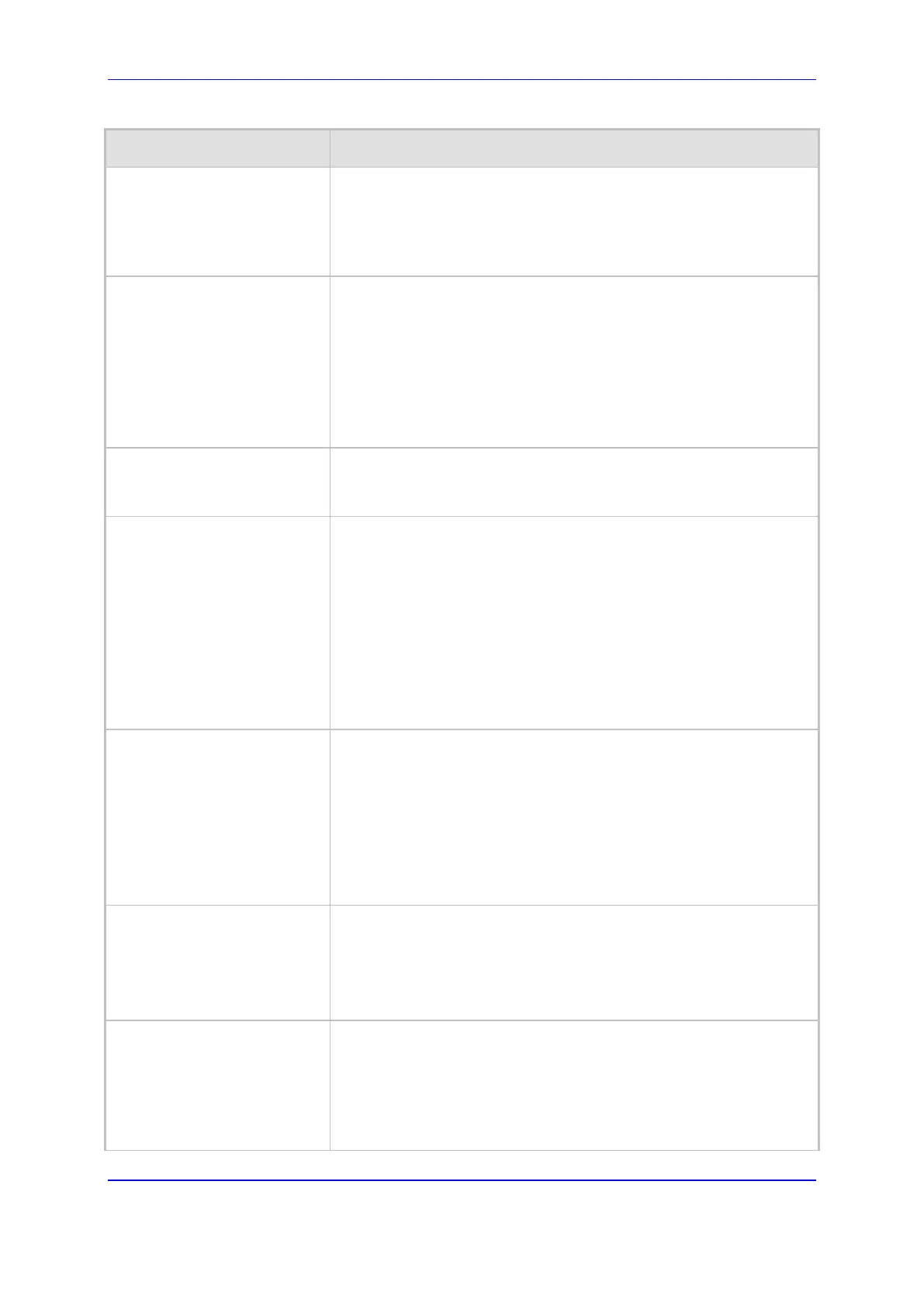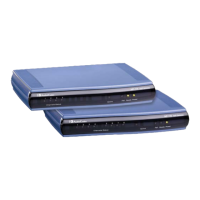Version 7.2 1033 Mediant 1000B Gateway & E-SBC
User's Manual 62. Configuration Parameters Reference
Parameter Description
Modem Bypass Output Gain
configure voip > media fax-
modem > modem-bypass-
output-gain
[ModemBypassOutputGain]
Defines the modem bypass output gain control.
The range is -31 dB to +31 dB, in 1-dB steps. The default is 0 (i.e.,
no gain).
modem-bypass-output-gain
[FaxModemBypassBasicRTP
PacketInterval]
Defines the basic frame size used during fax/modem bypass
sessions.
[0] = (Default) Determined internally
[1] = 5 msec (not recommended)
[2] = 10 msec
[3] = 20 msec
Note: When set to 5 msec (1), the maximum number of
simultaneous channels supported is 120.
jitter-buffer-minimum-delay
[FaxModemBypasDJBufMinD
elay]
Defines the Jitter Buffer delay (in milliseconds) during fax and
modem bypass session.
The range is 0 to 150 msec. The default is 40.
enable-fax-modem-inband-
network-detection
[EnableFaxModemInbandNet
workDetection]
Enables in-band network detection related to fax/modem.
[0] = (Default) Disable.
[1] = Enable. When the parameter is enabled on Bypass and
transparent with events mode (VxxTransportType is set to 2 or 3),
a detection of an Answer Tone from the network triggers a switch
to bypass mode in addition to the local Fax/Modem tone
detections. However, only a high bit-rate coder voice session
effectively detects the Answer Tone sent by a remote endpoint.
This can be useful when, for example, the payload of voice and
bypass is the same, allowing the originator to switch to bypass
mode as well.
NSE-mode
[NSEMode]
Global parameter that enables Cisco's compatible fax and modem
bypass mode, Named Signaling Event (NSE) packets. You can also
configure this functionality per specific calls, using IP Profiles
(IpProfile_NSEMode). For a detailed description of the parameter
and for configuring this functionality in the IP Profiles table, see
''Configuring IP Profiles'' on page 393.
Note: If this functionality is configured for a specific IP Profile, the
settings of this global parameter is ignored for calls associated with
the IP Profile.
NSE-payload-type
[NSEPayloadType]
Defines the NSE payload type for Cisco Bypass compatible mode.
The valid range is 96-127. The default is 105.
Note:
The parameter is applicable only to the Gateway application.
Cisco gateways usually use NSE payload type of 100.
configure voip > sip-definition
settings > t38-use-rtp-port
[T38UseRTPPort]
Defines the port (with relation to RTP port) for sending and receiving
T.38 packets.
[0] = (Default) Use the RTP port +2 to send/receive T.38 packets.
[1] = Use the same port as the RTP port to send/receive T.38
packets.
Note:

